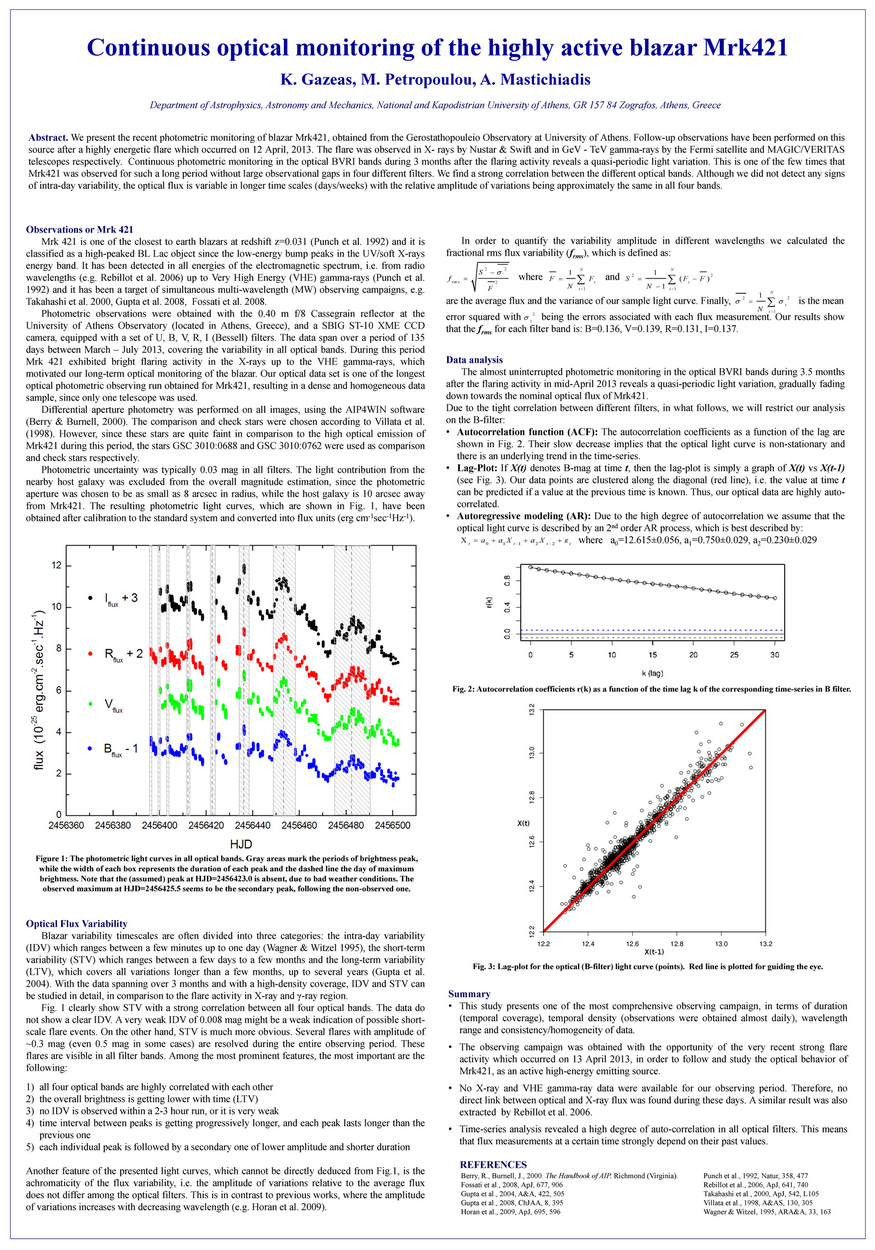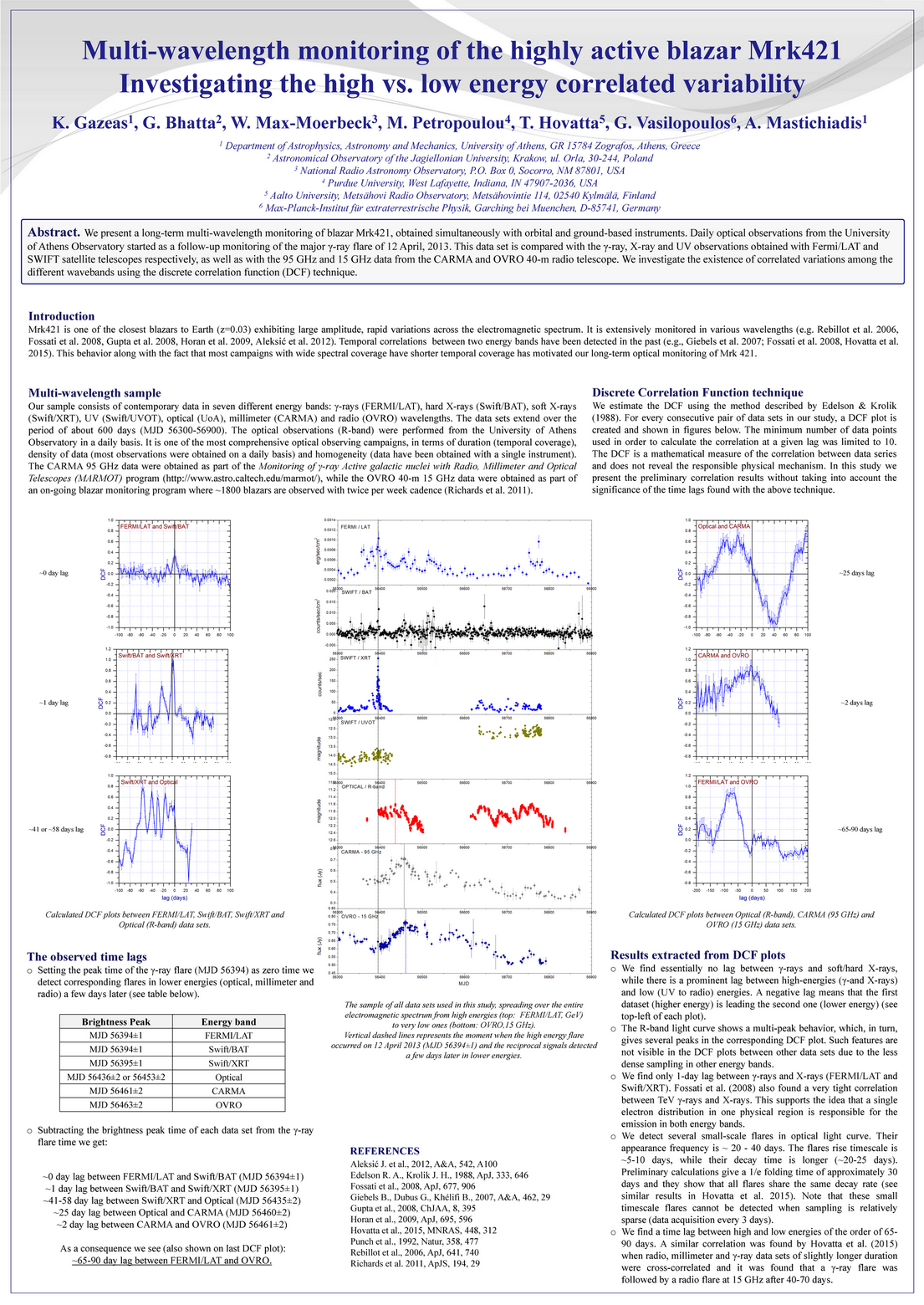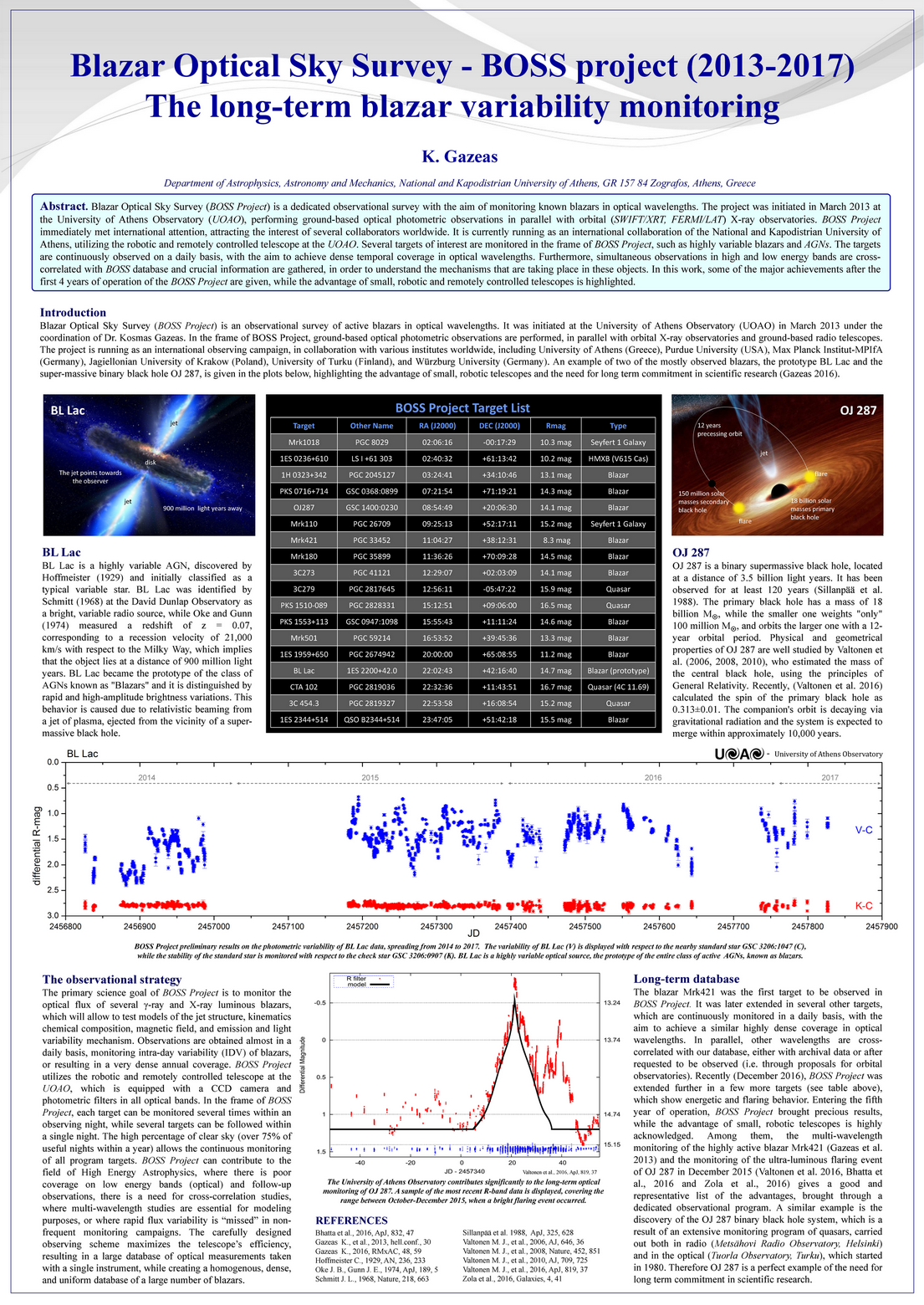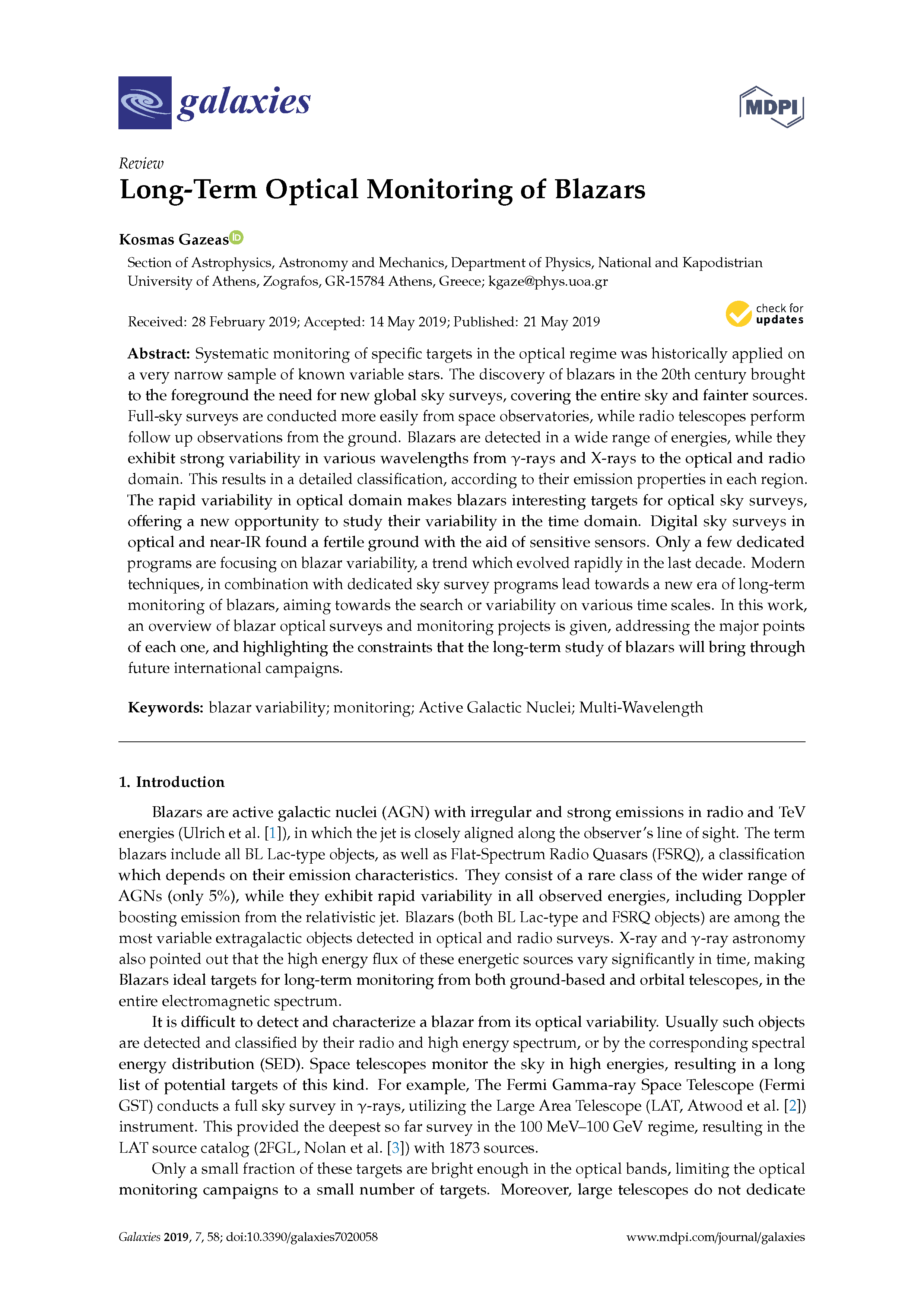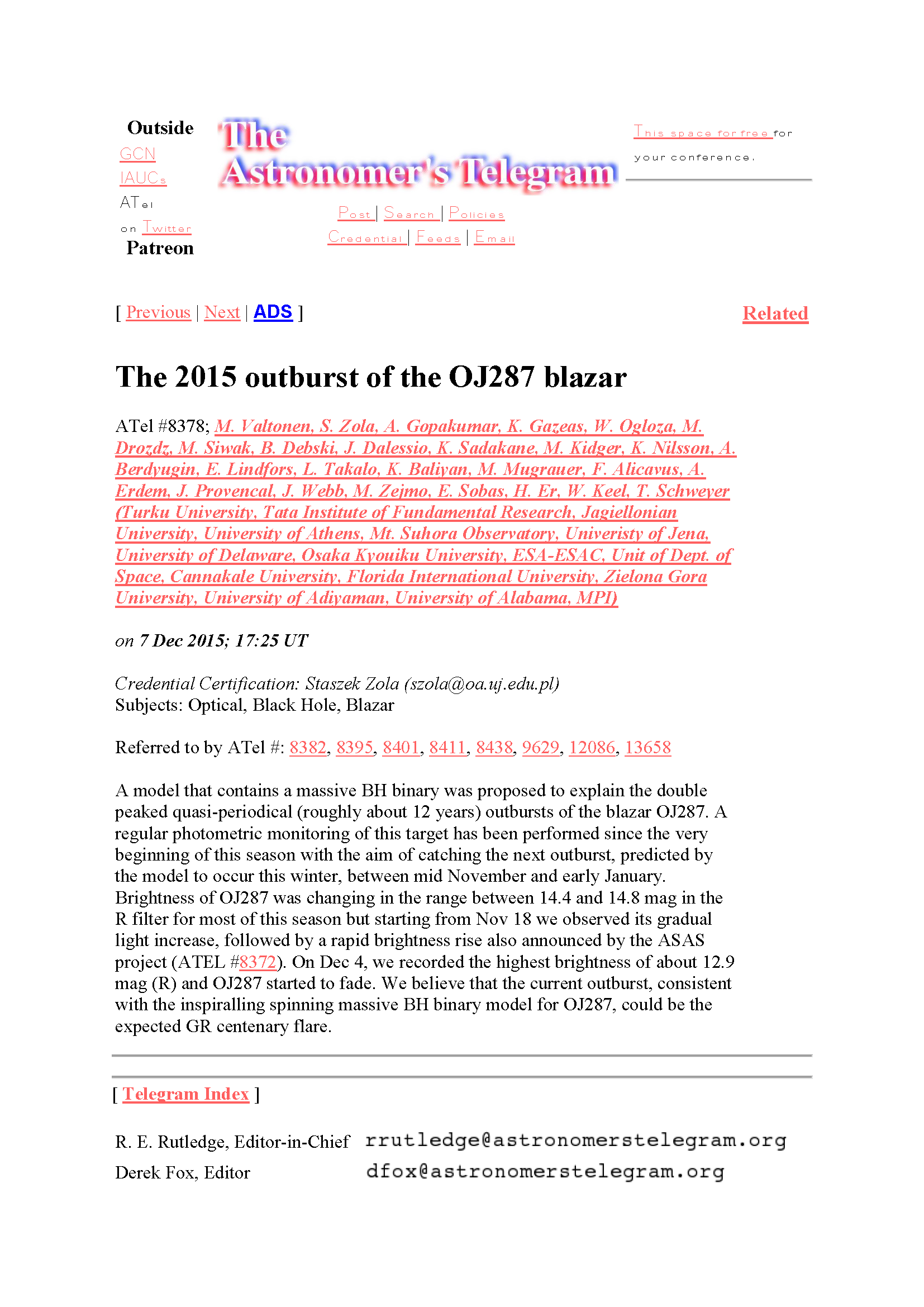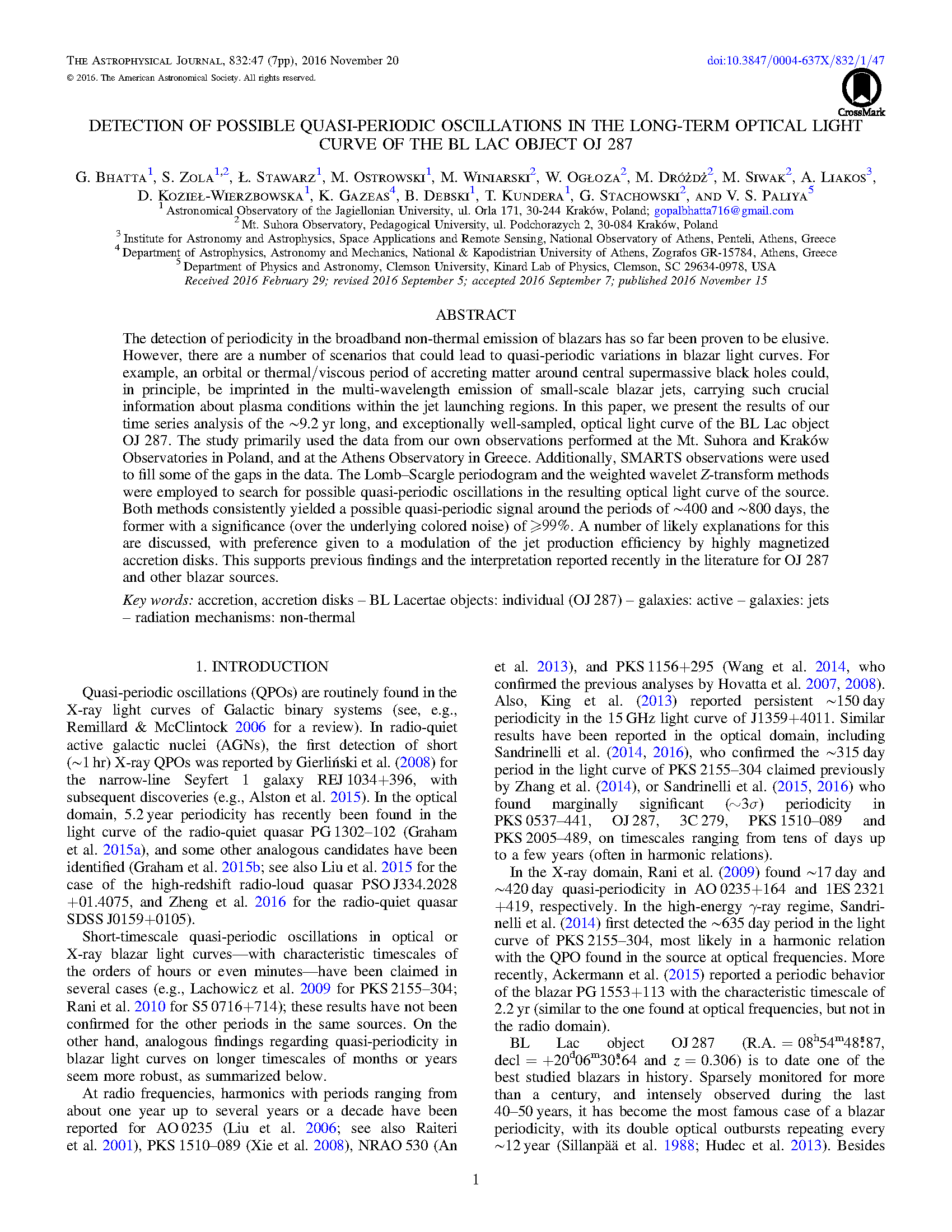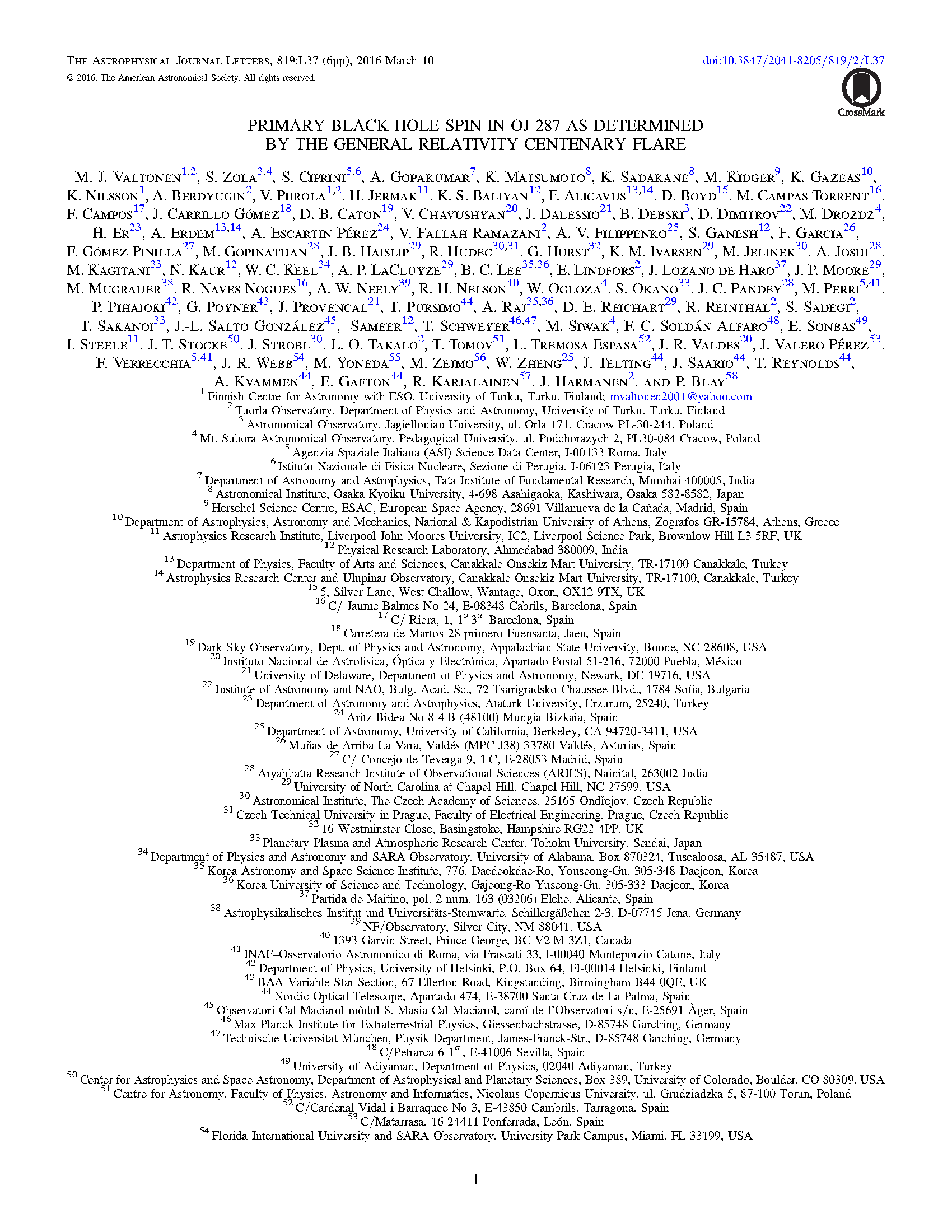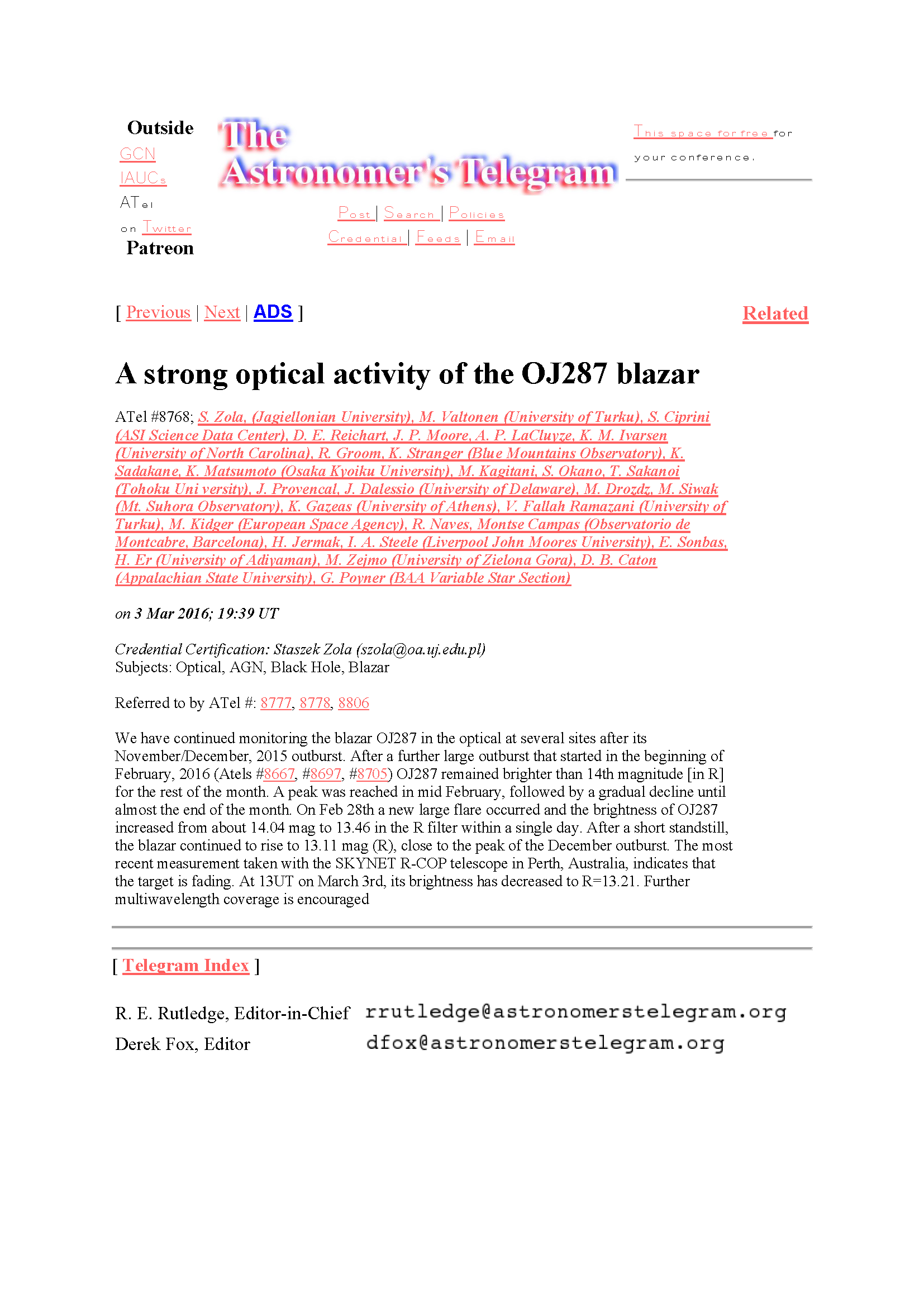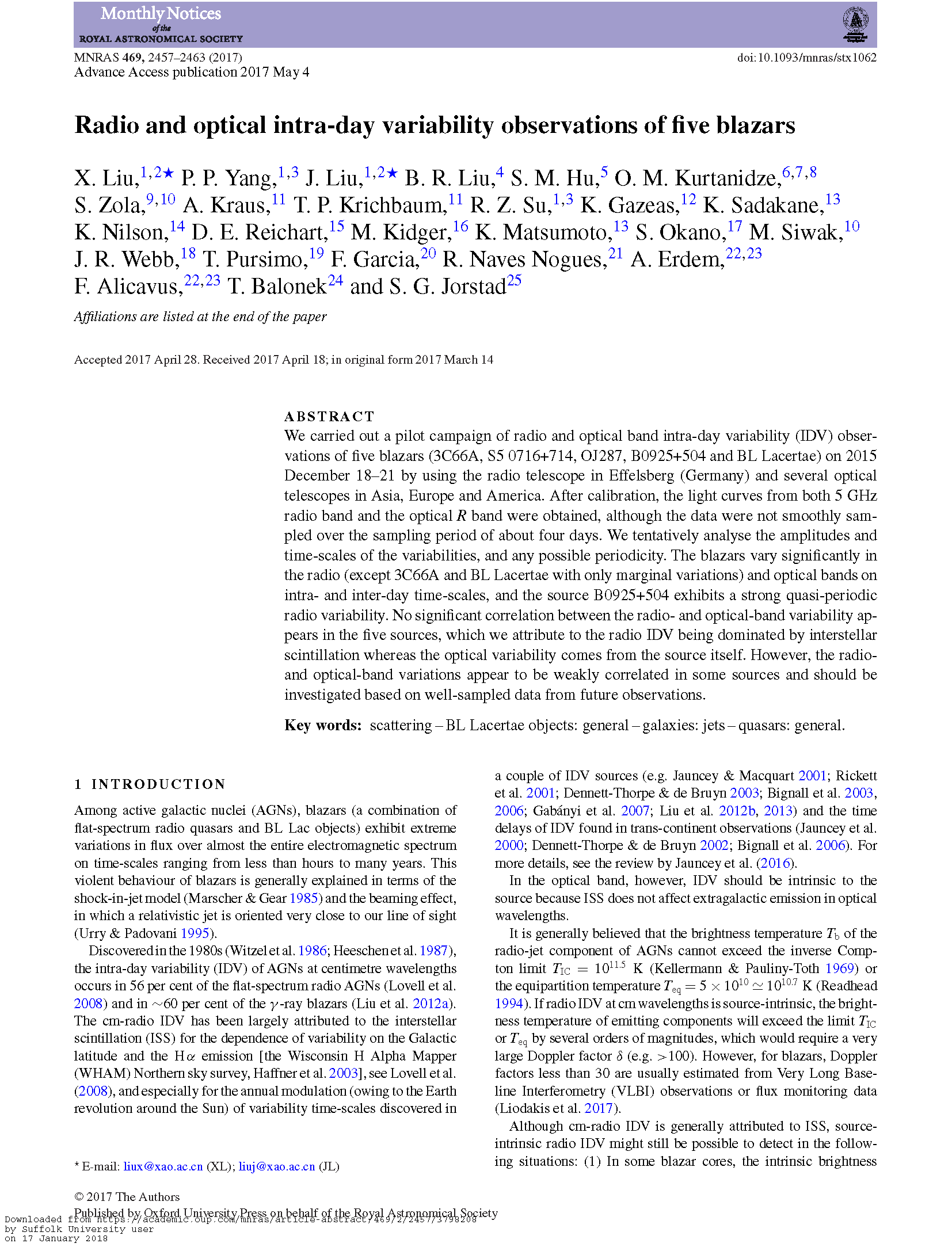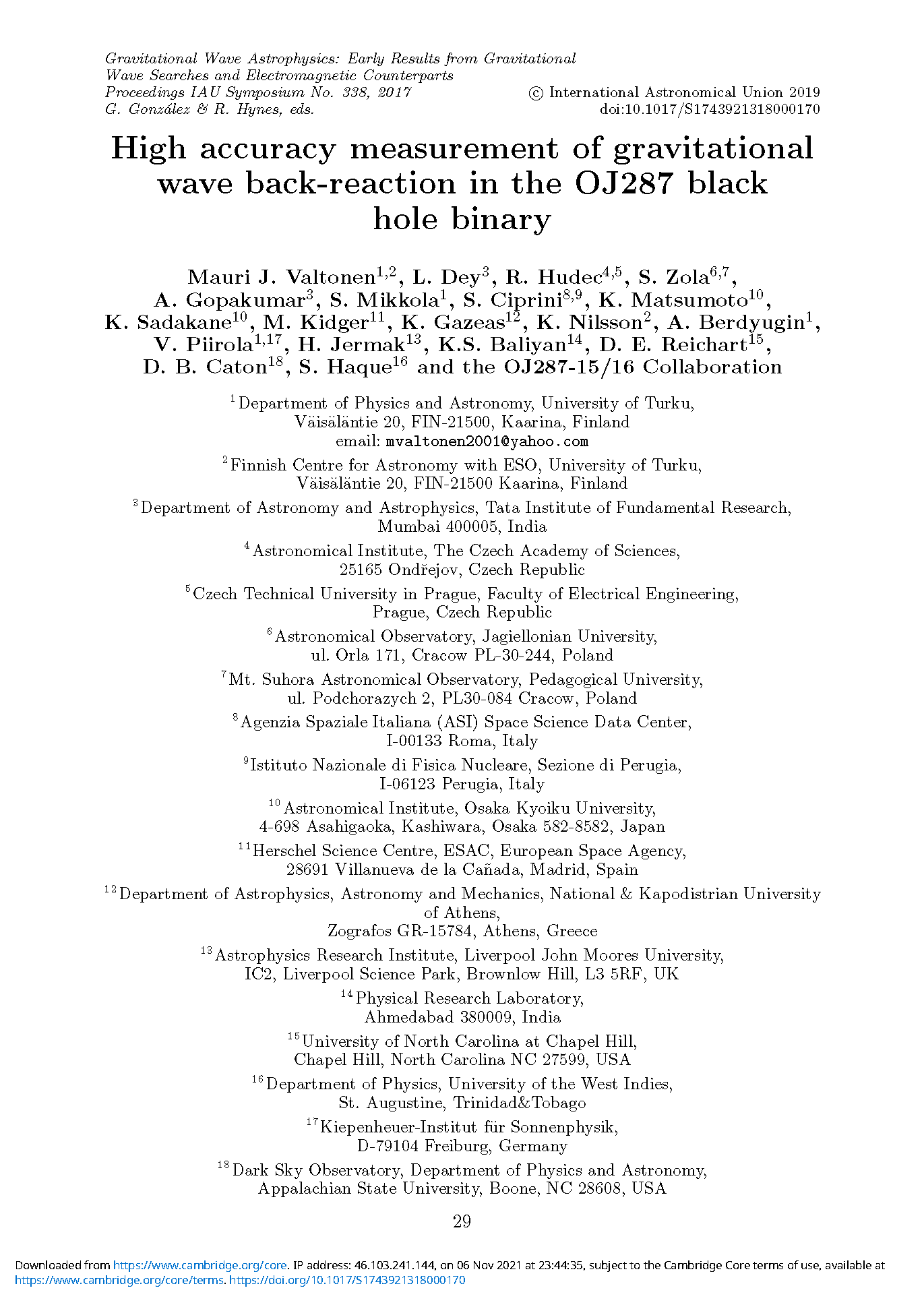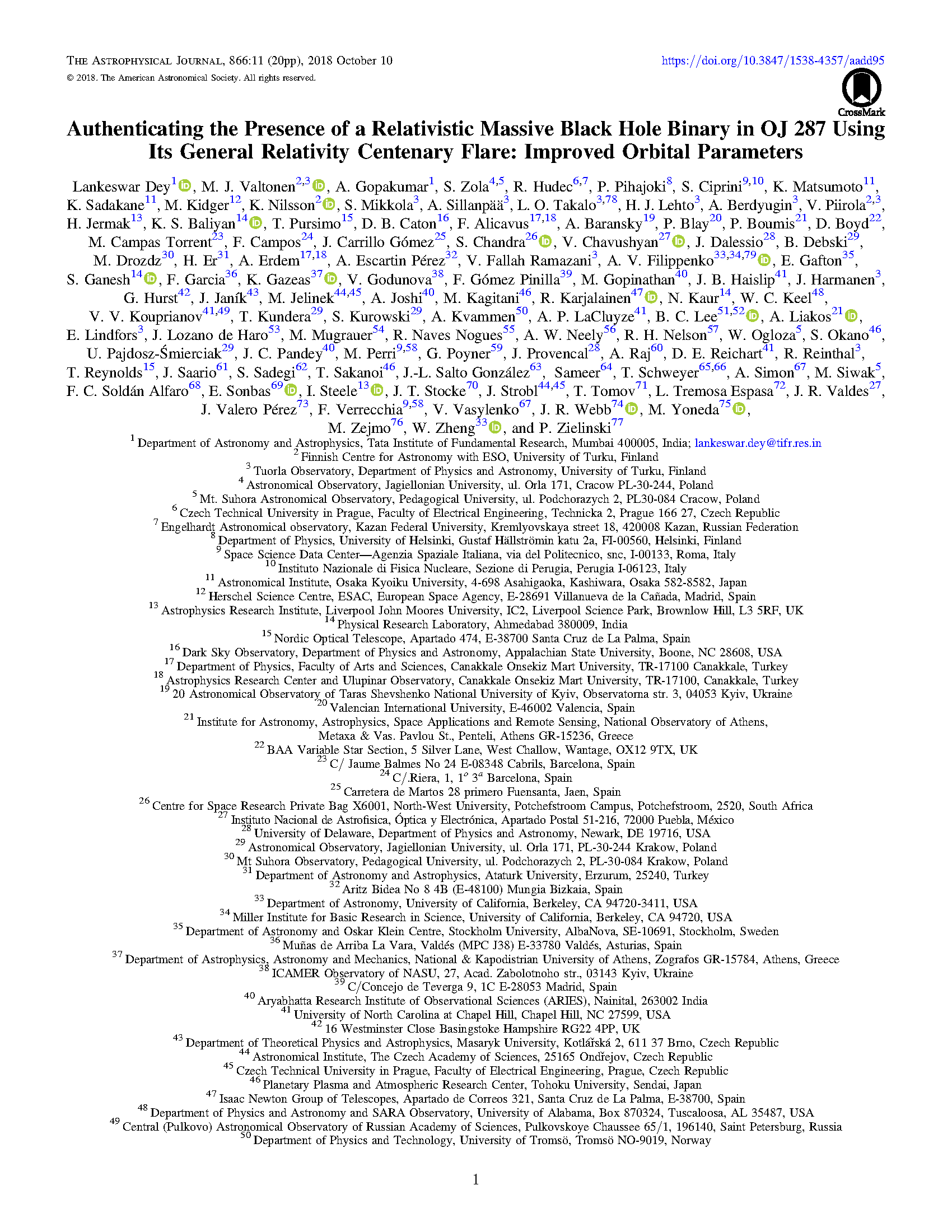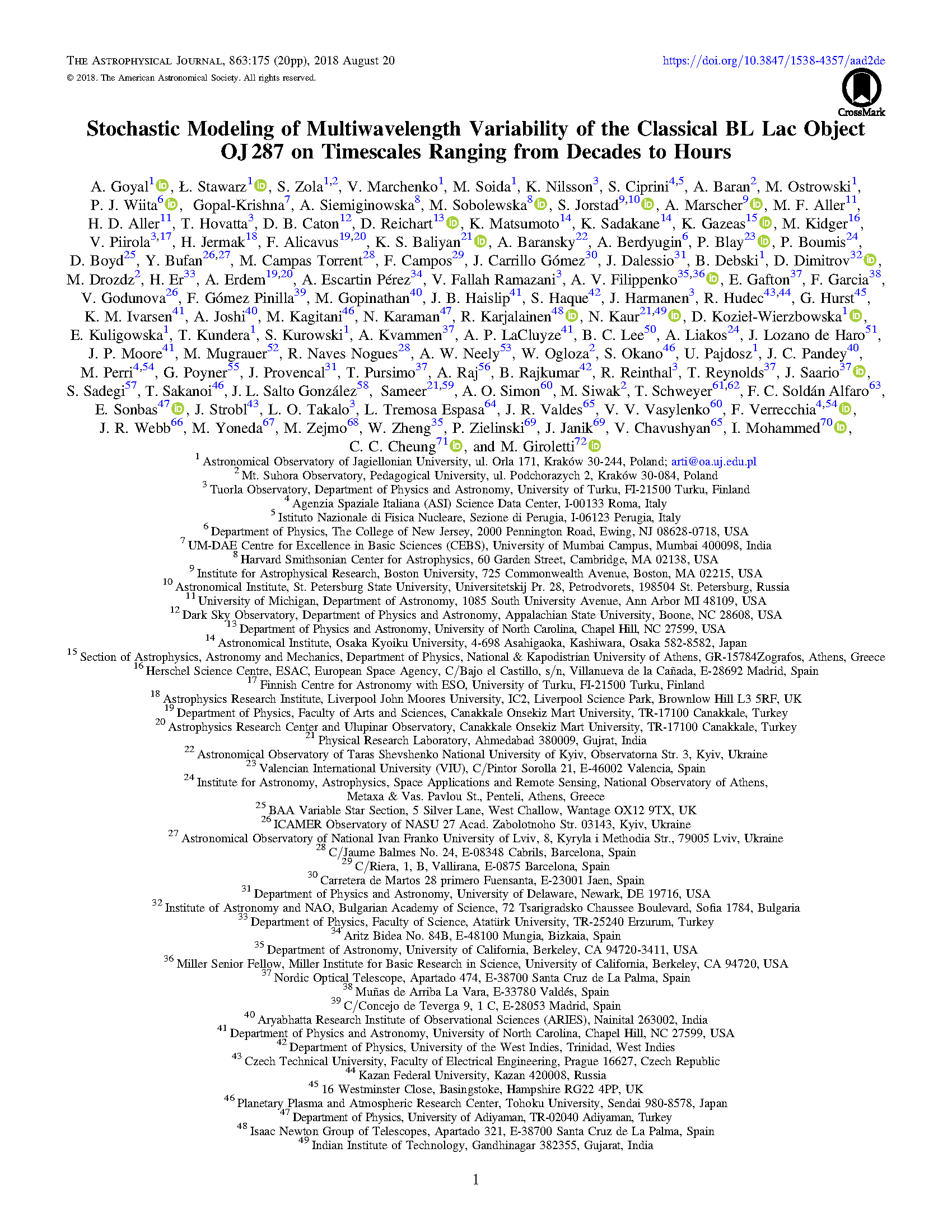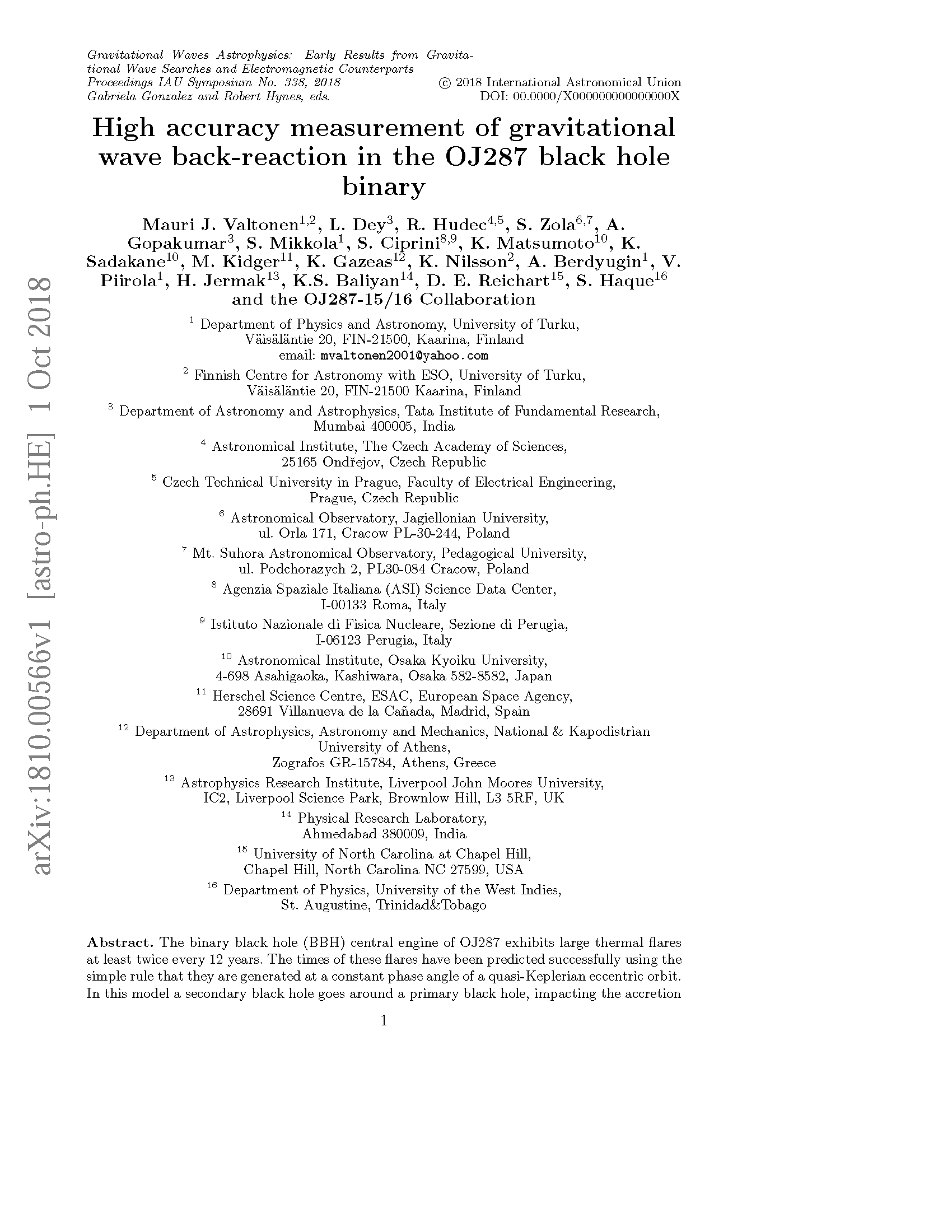Continuous optical monitoring of the highly active blazar Mrk421
K. Gazeas, M. Petropoulou, A. Mastichiadis
ABSTRACT
We present the recent photometric monitoring of blazar Mrk421, obtained from the Gerostathopouleio Observatory at the University of Athens. Follow-up observations have been performed on this source after a highly energetic flare which occurred on 12 April, 2013. The flare was observed in X- rays by Nustar & Swift and in GeV-TeV gamma-rays by the Fermi satellite and MAGIC/VERITAS telescopes respectively. Continuous photometric monitoring in the optical BVRI bands during 3 months after the flaring activity reveals a quasi-periodic light variation. This is one of the few times that Mrk421 was observed for such a long period without large observational gaps in four different filters. We find a strong correlation between the different optical bands. Although we did not detect any signs of intra-day variability, the optical flux is variable in longer time scales (days/weeks) with the relative amplitude of variations being approximately the same in all four bands.Reference: Gazeas K., Petropoulou M., Mastichiadis A., 2013, Hel.A.S. Conf. Series
